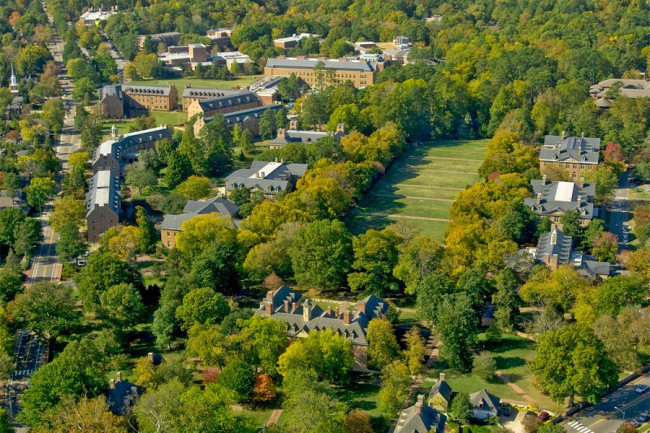The past 35 years have witnessed rising costs of higher education, dwindling public spending for universities and a widening wage gap. With this backdrop, researchers presented federal and state solutions to higher education challenges at the College of William and Mary School of Education Saturday, April 21.
The events were held as part of the Conference on Higher Education and Social Mobility held at the College April 21-22, which brought in academics, administrators and policymakers to discuss and debate topics in U.S. post-secondary education.
The first presenter of the morning was Senior Fellow at the Urban Institute Sandy Baum, who discussed her research question: Does federal financial aid facilitate social mobility?
To motivate her question, Baum said that even though the federal government spends billions of dollars on need-based financial aid, low-income kids are still less likely to attend college.
“Money, in the form of a voucher when you’re ready to go off to college, is just obviously not the only answer,” Baum said. “We have much bigger problems than that and there’s no way that you can hand people money when they’re 18 years old and expect their outcomes to be the same as the outcomes of people who have grown up in entirely different circumstances.”
Instead, Baum posed an alternate financial aid system where the federal government would contribute, for example, $1,000 per year to a savings account for each child in a low-income family until the child reached college age.
“We’re not going to solve all of their problems, but let’s think about how to structure the federal financial aid system so it does a better job, Baum said. “And that means thinking about what happens to children when they’re young and how we prepare them for college, how we help them make choices about college, and how we provide structures that help them to succeed when they’re in college.”
Discussing her research, Senior Vice President of the Division of Government and Public Affairs at the American Council on Education Terry Hartle discussed a paradox of recent higher education; over the past 50 years, even as the federal government has poured hundreds of billions of dollars into higher education, economic inequality has increased.
Hartle said that, according to the Pew Mobility Project, just over half of working class voters believe their children will fare better than they themselves did. For working class whites, the figure is 42 percent. Moreover, less than half of working class whites think that having a college degree would make a difference in their lives.
“It would not deal with the other problems, Hartle said. “It wouldn’t make sure that they had access to good elementary and secondary schools. It wouldn’t necessarily help them choose the right institution. Indeed, it might make them easier prey for institutions that saw they had a lot of money to spend on post-secondary education.”
The second presenter of the morning was assistant professor of economics from Temple University Douglas Webber, who discussed a risk-sharing plan — a plan in which the federal government would financially penalize colleges for poor outcomes, such as high student loan default rates and low graduation rates.
“This deceptively simple proposal says, let’s take a percentage of that and charge a penalty to the school. It’s going to target schools where lots of students that take out loans, those loans are very large and those students have poor labor market outcomes.”
Speaking to an audience mostly either employed by or attending public and private non-profit universities, Webber said he wanted to assure everyone that the risk-sharing plan would predominantly affect for-profit institutions, a sect of higher education notorious for poor outcomes.
The discussion then transitioned from the federal to the state level. Harvard professor of public policy, education and economics David Deming presented his research, which concerned the impacts of price and spending subsidies on higher education outcomes.
Deming said that students essentially get a discount on their educations — by and large, universities spend more per student than they do in tuition.
Vice President for University Advancement Matthew Lambert ’99 presented findings from his book “Privatization and the Public Good.”
Lambert described the “highly-charged word” privatization as the process in which public universities begin to resemble private universities. He called this an apt description of what has been and is currently happening in higher education.
Much of Lambert’s research for the book involved meeting with state legislators, who he said have considerable control over funding for public universities.
“I found that [legislators] are at once, the most important owners of these public institutions, owners having a variety of meanings in their mind, but they’re also the least knowledgeable about the public agenda and about higher education broadly,” Lambert said.

